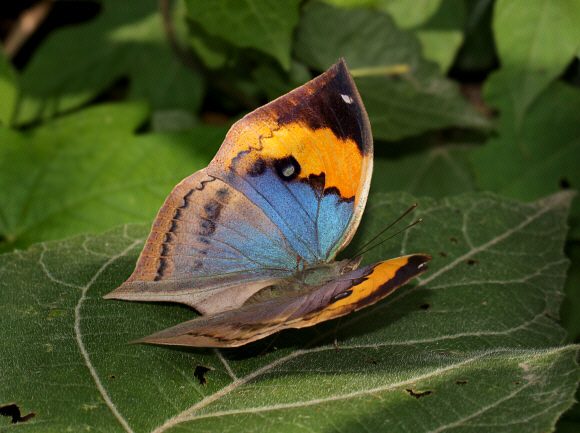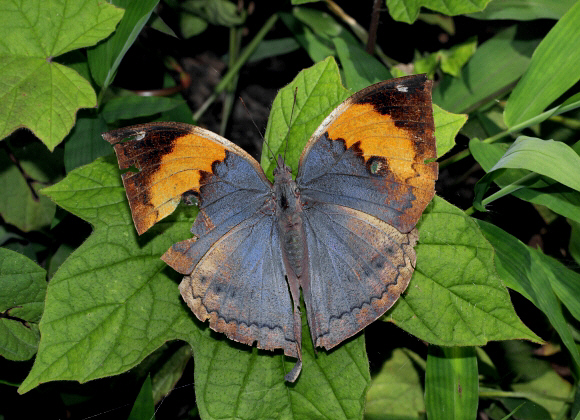
Introduction
The Indo-Australian genera Doleschallia and Kallima, and the African genera Kamilla, Mallika, and Kallimoides are often known as Dead Leaf or Oakleaf butterflies. Their forewings have a strongly falcate apex, and the tornus of the hindwings is extended to form a short tail. The resulting shape, together with the cryptic underside coloration creates a remarkable resemblance to a dead leaf, complete with a fake ‘midrib’. The disguise is particularly effective because there is considerable intra-specific variation in the underside markings, which makes it very difficult for insectivorous birds to form a ‘search image’ for the butterfly.
There are between 8-10 species in the genus Kallima – the exact number is open to interpretation as some taxonomists elevate some ‘subspecies’ to the rank of species. There are 5 species found on the Indian subcontinent – alompra, horsfieldi, inachus, knyvetti, and philarchus. The remaining species are distributed variously from Burma to Java.
The upperside coloration of inachus is very consistent, but the cryptic underside pattern varies a great deal from one insect to another, particularly in the dry season morph.
Kallima inachus is found in India, Myanmar, Laos, Thailand, West Malaysia, China, and Taiwan.

Habitats
This species is found in rainforest habitats at altitudes between about 100-800m.
Lifecycle
The larval foodplant is Strobilanthes ( Acanthaceae ).

Adult behaviour
Early in the morning the butterflies descend from their overnight roosting places to settle in a head downward posture on woody stems or low foliage. If the sunlight is weak they will often bask with their wings fully outspread. Later in the day, in the dappled sunlight of the forest interior they settle on foliage to bask, and at these times they usually hold their wings half open.
I have on many occasions accidentally flushed up Kallima adults from their resting places on trees, or on the forest floor where they settle among leaf litter with their wings closed. When at rest they are virtually impossible to spot, due to their incredibly effective dead-leaf disguise. Despite having superb camouflage however they are regularly attacked by birds, as evidenced by the many adults which have peck marks taken out of their wings. The position of the beak marks indicates that the birds usually aim their attacks at the eyespots on the upper forewings, which are only visible when the butterflies bask.

